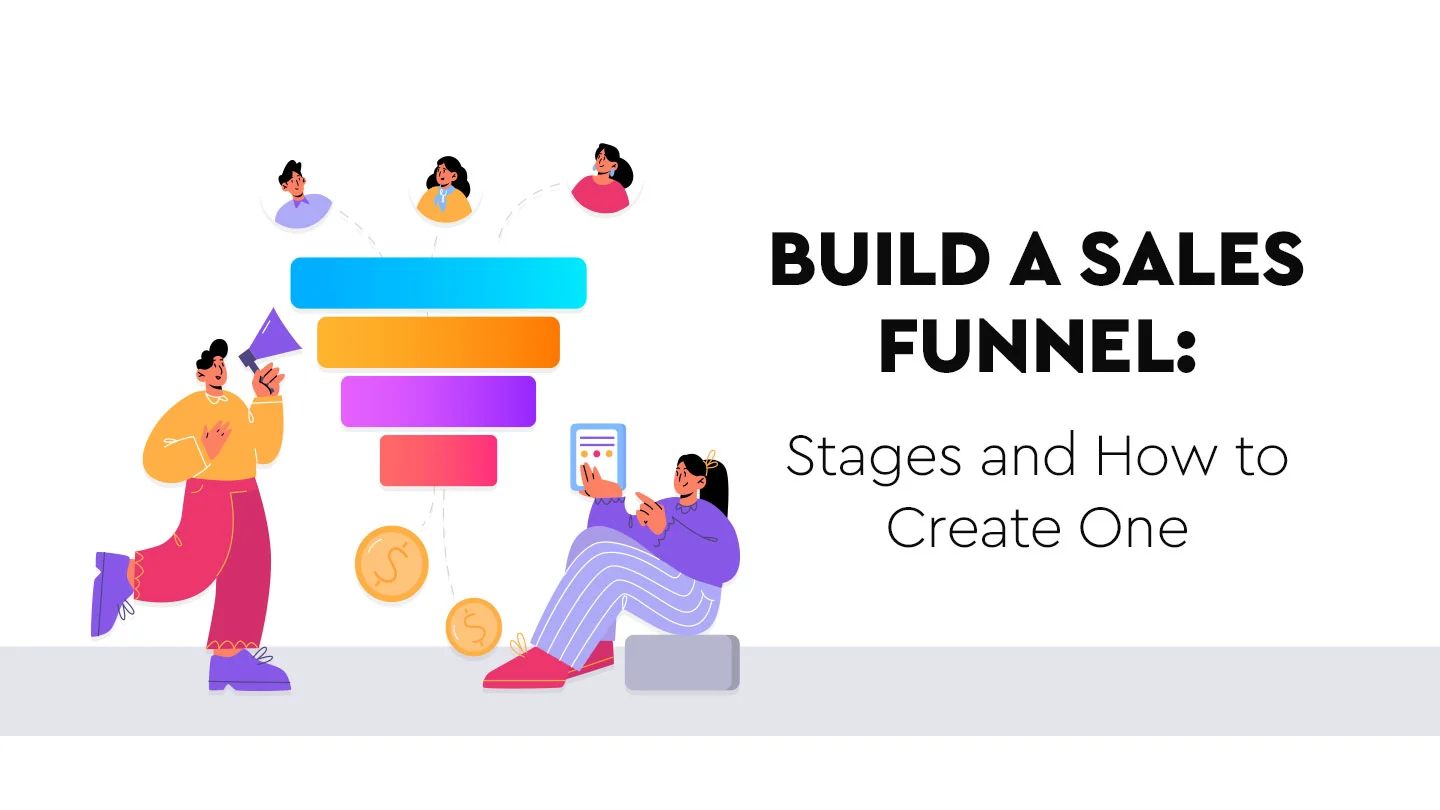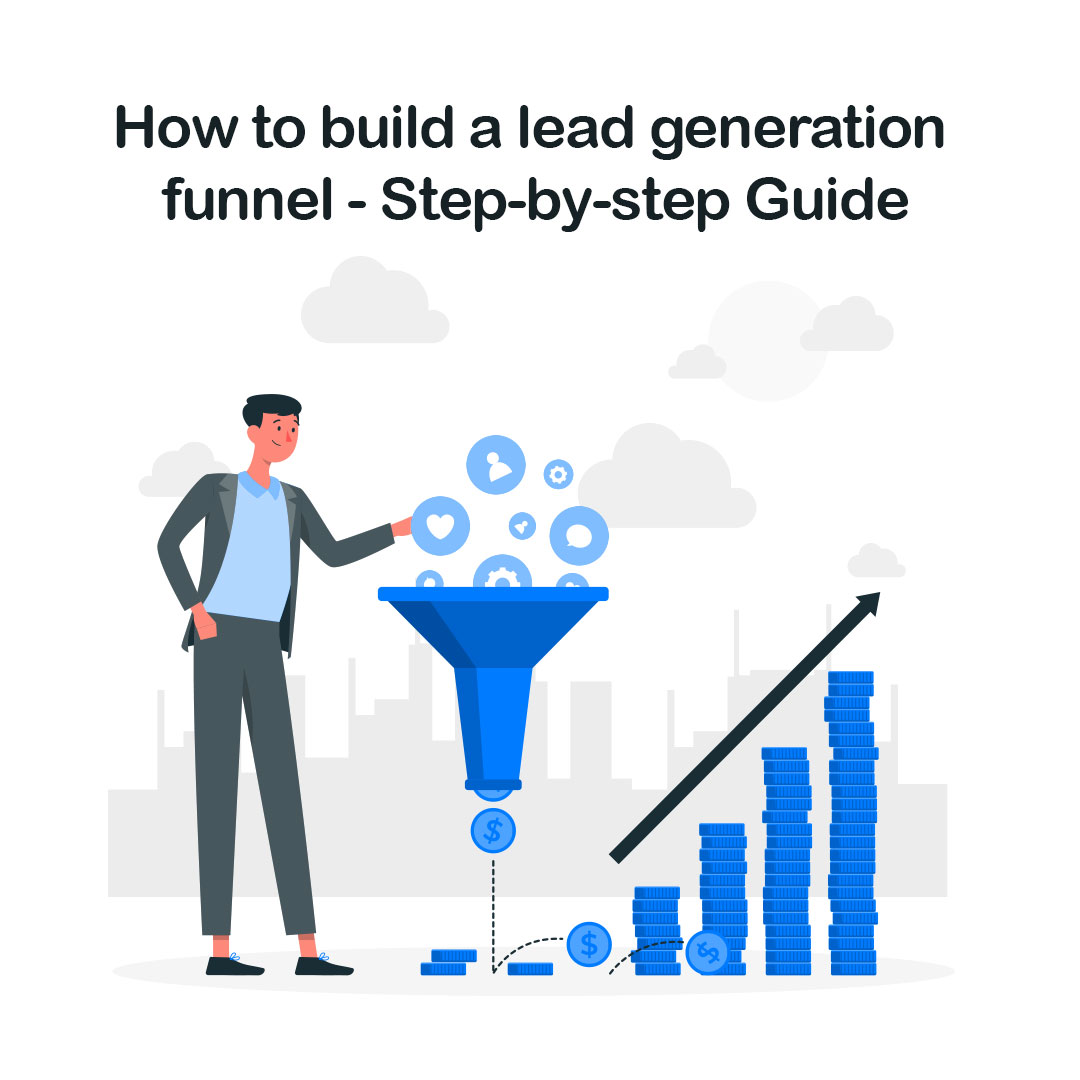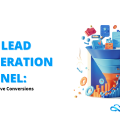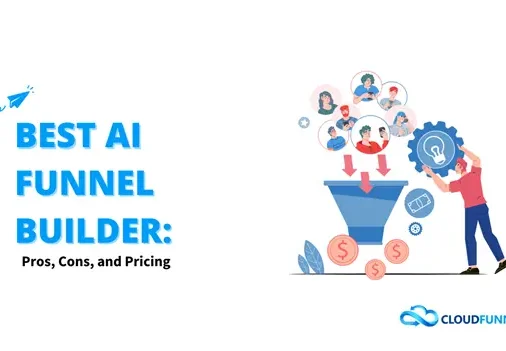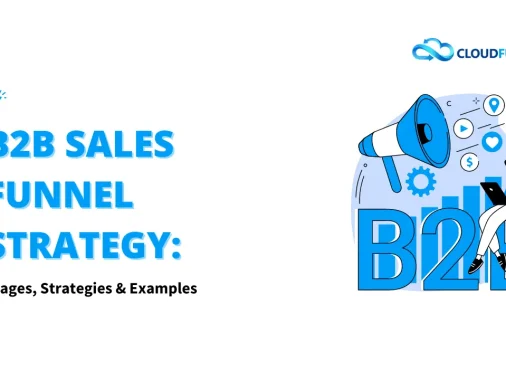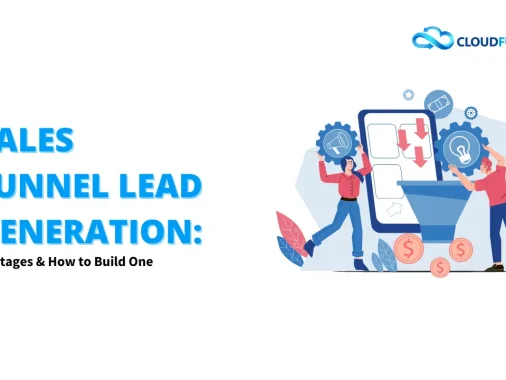Introduction
A sales funnel is a marketing concept that illustrates the journey potential customers take from initial awareness to the final purchase. It’s a crucial tool for businesses to understand and guide their prospects through the buying process and build a sales funnel. By visualizing each stage of the customer journey, businesses can optimize their marketing strategies to improve conversion rates and drive sales.
In this article, we will delve into the definition and importance of sales funnels, outline the various stages involved, and provide practical steps for creating an effective sales funnel. We will also highlight how tools like CloudFunnels can be seamlessly integrated at each stage to streamline and enhance your funnel. Whether you’re new to sales funnels or looking to refine your existing strategy, this guide will offer valuable insights and actionable tips to enhance your marketing efforts.
What is a Sales Funnel?
A sales funnel represents the process a potential customer goes through from first becoming aware of your business to making a purchase. This funnel helps businesses understand where prospects are in their buying journey and what actions to take to move them closer to making a purchase.
Importance in Guiding Potential Customers
- Structured Journey: Sales funnels guide potential customers through a structured journey, ensuring they receive the right information and support at each stage.
- Identify Gaps: By understanding the funnel, businesses can identify and address any gaps or weaknesses in their marketing strategy.
- Optimize Efforts: Helps in optimizing marketing efforts to target the right audience with appropriate content, improving overall efficiency and effectiveness.
Overview of Typical Stages in a Sales Funnel
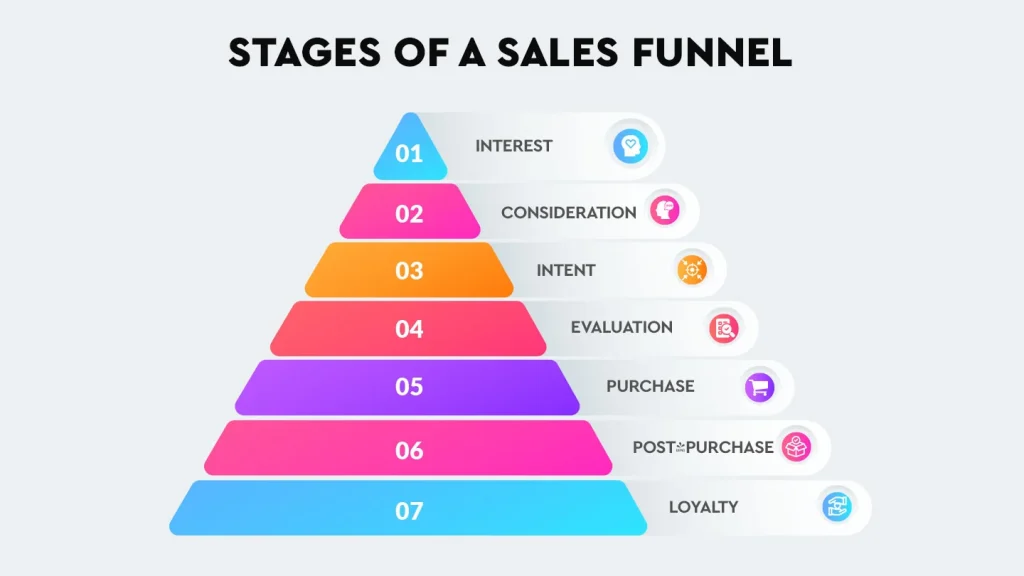
- Awareness: Attracting potential customers and making them aware of your product or service.
- Interest: Engaging prospects and building their interest in what you offer.
- Consideration: Helping prospects evaluate their options and understand the benefits of your product.
- Intent: Encouraging potential customers to show interest in making a purchase.
- Evaluation: Providing detailed information to support their decision-making process.
- Purchase: Closing the sale with a smooth and secure transaction process.
- Post-Purchase: Ensuring customer satisfaction and encouraging repeat business.
- Loyalty: Building long-term relationships and fostering customer loyalty through personalized offers and loyalty programs.
Understanding these stages allows businesses to create targeted content and marketing strategies that effectively guide potential customers through each step of the buying process. Sales Funnel Builders can significantly enhance each stage by providing robust features for creating, managing, and optimizing your sales funnels.
Stages of a Sales Funnel
Awareness Stage
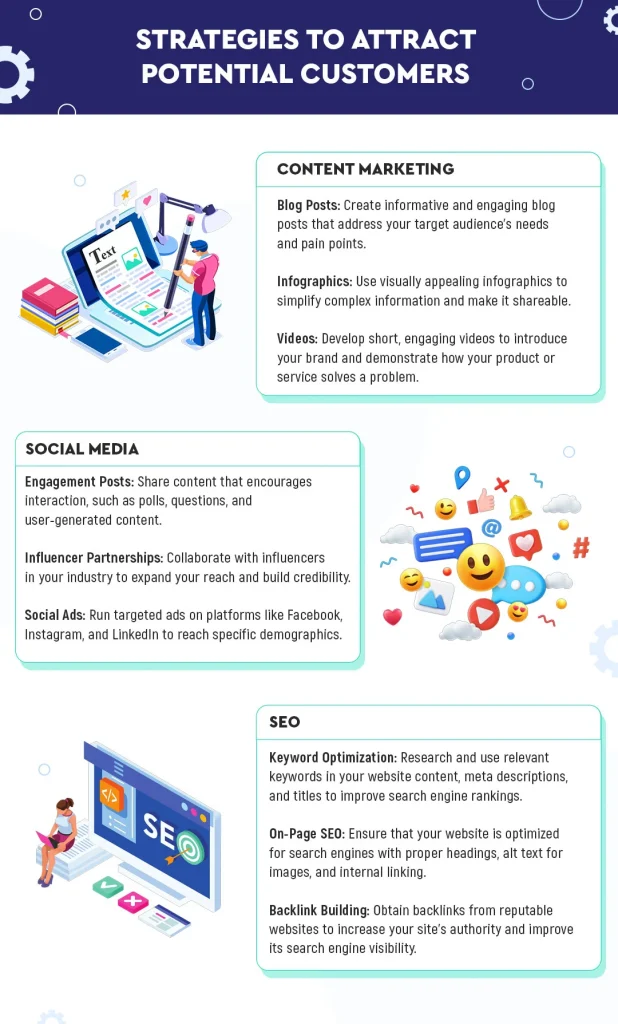
The purpose of the awareness stage is to attract potential customers and make them aware of your product or service. This stage is about reaching a broad audience and capturing their attention. It’s crucial to use various channels and strategies to maximize your reach.
- Content Marketing: Creating valuable and informative content that addresses the needs and interests of your target audience. Blog posts, infographics, and videos are effective content types.
- Social Media: Leveraging social media platforms to share content, engage with potential customers, and build brand awareness. Regular updates and interactive posts can significantly boost visibility.
- SEO: Optimizing your website and content for search engines to attract organic traffic. This includes keyword optimization, meta descriptions, and backlinks.
With the help of CloudFunnels, you can enhance your efforts by creating eye-catching landing pages and lead magnets that draw visitors and encourage them to provide their contact information. CloudFunnels’ drag-and-drop builder makes it easy to design and deploy these elements to capture leads efficiently.
Interest Stage
In the interest stage, the goal is to build interest in your product or service. This involves engaging potential customers and nurturing their interest. Providing valuable information and maintaining engagement are key strategies here.
- Engaging Content: Providing blog posts, videos, and infographics that highlight the benefits of your product or service. Interactive content like quizzes and polls can also be effective.
- Lead Magnets: Offering free resources, such as eBooks, whitepapers, or webinars, in exchange for contact information. These resources should provide high value and address specific pain points of your audience.
Using CloudFunnels, you can create engaging landing pages and capture leads with effective forms and lead magnets. The platform’s drag-and-drop builder allows you to customize your pages easily, ensuring they align with your brand and message.
Consideration Stage
The consideration stage is where you help potential customers evaluate their options and understand the benefits of your product. Providing in-depth information and building trust are critical at this stage.
- Case Studies: Showcasing success stories and real-world examples of how your product has helped other customers. Detailed case studies can demonstrate the effectiveness of your solutions.
- Testimonials: Providing customer reviews and testimonials to build credibility. Positive feedback from existing customers can significantly influence potential buyers.
- Product Demos: Offering demonstrations or free trials of your product. Allowing prospects to experience your product firsthand can be a powerful persuasion tool.
With CloudFunnels, you can create detailed product pages that effectively showcase testimonials and case studies. The platform’s integration capabilities also allow you to offer product demos seamlessly, enhancing the consideration stage.
Intent Stage
In the intent stage, the goal is to encourage potential customers to take action and show interest in making a purchase. Strong calls-to-action and clear value propositions are essential here.
- Strong CTAs: Using compelling calls-to-action that prompt visitors to take the next step. CTAs should be clear, concise, and prominently placed on your pages.
- Clear Value Propositions: Clearly communicating the unique benefits of your product. Highlight what sets your product apart from competitors and why it’s the best choice.
CloudFunnels enables you to create persuasive landing pages with strong CTAs and clear value propositions. Its user-friendly interface ensures that you can design pages that effectively drive conversions.
Evaluation Stage
The evaluation stage involves providing detailed information to help potential customers make a decision. This stage is about addressing any remaining concerns and reinforcing the benefits of your product.
- Detailed Information: Offering in-depth product descriptions, comparisons, and specifications. Ensure that all necessary information is readily available to aid decision-making.
- Free Trials and Consultations: Allowing potential customers to try your product or speak with a representative. Free trials and consultations can help overcome any last-minute objections.
CloudFunnels allows you to set up free trial offers and detailed comparison pages to assist in the decision-making process. Its analytics tools also help track engagement and identify areas for improvement, ensuring that your evaluation stage is effective.
Purchase Stage
The purchase stage is where the customer completes the transaction and buys your product. Ensuring a seamless and secure transaction process is crucial to avoid cart abandonment.
- Smooth Transactions: Ensuring a seamless and secure checkout process. Simplify the checkout process as much as possible to reduce friction.
- Multiple Payment Options: Offering various payment methods to accommodate different preferences. The more options you provide, the easier it is for customers to complete their purchases.
CloudFunnels supports multiple payment gateways, allowing you to create user-friendly checkout pages that cater to a wide range of payment preferences. This flexibility can significantly enhance the purchasing experience for your customers.
Post-Purchase Stage
In the post-purchase stage, the focus is on ensuring customer satisfaction and encouraging repeat business. Providing excellent support and maintaining communication are key strategies here.
- Follow-Up Communications: Sending thank-you emails and surveys to gather feedback. Follow-up communications show customers that you value their business and care about their experience.
- Customer Support: Providing excellent customer service and support. Address any issues promptly and effectively to maintain customer satisfaction.
CloudFunnels can automate follow-up emails and manage customer support efficiently. Its integration with CRM tools ensures that you can keep track of customer interactions and address their needs promptly, enhancing customer satisfaction and loyalty.
Loyalty Stage
The loyalty stage aims to build long-term relationships and foster customer loyalty. Encouraging repeat business and leveraging customer loyalty programs are important at this stage.
- Loyalty Programs: Creating programs that reward repeat customers. Loyalty programs can include discounts, exclusive offers, and points-based systems.
- Personalized Offers: Sending personalized offers and recommendations. Use customer data to tailor offers to individual preferences and buying behavior.
CloudFunnels allows you to set up loyalty programs and send personalized email campaigns. Its robust analytics can help you track customer engagement and adjust your strategies to maximize loyalty and retention, ensuring long-term customer relationships.
How to Build a Sales Funnel
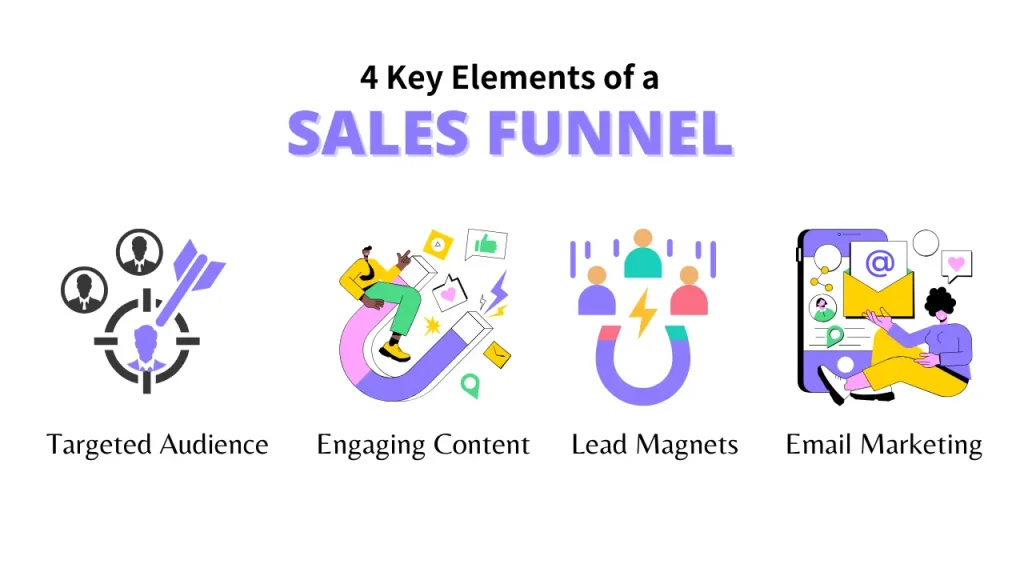
Define Your Target Audience
Knowing your target audience is crucial for building an effective sales funnel. Understanding who your ideal customers are allows you to tailor your marketing efforts to meet their needs and preferences.
- Importance:
- Helps create more targeted and effective marketing campaigns.
- Ensures that your content resonates with your audience.
- Methods:
- Market Research: Conduct surveys, focus groups, and interviews to gather insights.
- Data Analysis: Analyze customer data to identify patterns and trends.
Use tools like CloudFunnels to segment your audience and create targeted campaigns that address their specific needs and preferences.
Create Engaging Content for Each Stage
Tailoring content to each stage of the funnel ensures that your message resonates with potential customers at the right time. Different stages require different types of content to keep prospects engaged and moving forward.
- Examples:
- Awareness: Blog posts, social media updates, and videos that introduce your brand and products.
- Interest: eBooks, whitepapers, and webinars that provide in-depth information and build interest.
- Consideration: Case studies, testimonials, and product demos that help prospects evaluate their options.
Use CloudFunnels to manage and distribute content across different stages of the funnel, ensuring that each piece of content is strategically placed to guide prospects through the buying journey.
Implement Lead Generation Strategies
Capturing leads is essential for moving potential customers through the sales funnel. Effective lead generation funnel strategies ensure that you have a
steady stream of prospects entering your funnel.
- Tools and Techniques:
- Landing Pages: Create dedicated pages to capture visitor information. These pages should be optimized for conversions with clear CTAs and compelling offers.
- Forms: Use forms to collect contact details from visitors. Ensure that forms are easy to fill out and ask for only the necessary information.
- Calls-to-Action: Encourage visitors to take action with compelling CTAs that guide them to the next stage of the funnel.
Use CloudFunnels to design effective landing pages, forms, and CTAs that capture leads efficiently and move them through the funnel.
Nurture Leads Through Email Marketing
Nurturing leads keeps them engaged and moves them closer to making a purchase. Email marketing is a powerful tool for maintaining communication and building relationships with prospects.
- Importance:
- Builds relationships and maintains interest in your product or service.
- Provides valuable information that guides prospects through the funnel.
- Effective Strategies:
- Email Sequences: Send a series of emails that provide value, build trust, and encourage action. Each email should be strategically crafted to address the needs and concerns of the recipient.
- Automation: Use email automation to send timely and relevant messages based on the recipient’s actions and stage in the funnel.
CloudFunnels allows you to create automated email sequences and nurture leads effectively. Its automation features ensure that your messages are sent at the right time, maximizing engagement and conversions.
Use CRM Tools to Track and Manage Leads
CRM tools help manage and track leads throughout the sales funnel. They provide valuable insights into customer interactions and progress, allowing you to make data-driven decisions.
- Role of CRM:
- Organizes customer information and interactions in one place.
- Helps track progress and follow-up activities to ensure no leads are lost.
- Recommended CRM Tools:
- Salesforce, HubSpot, and Zoho CRM are popular options that integrate well with other marketing tools.
CloudFunnels integrates with CRM tools to help you manage your leads efficiently. This integration ensures that you can track interactions, segment leads, and follow up appropriately.
Analyze and Optimize Your Sales Funnel
Continuous analysis and optimization ensure your sales funnel remains effective. By monitoring performance and making data-driven adjustments, you can improve conversion rates and overall effectiveness.
- Tracking KPIs:
- Monitor key performance indicators like conversion rates, lead times, and customer acquisition costs. These metrics provide insights into the performance of your funnel.
- A/B Testing:
- Experiment with different strategies to see what works best. A/B testing allows you to compare variations and identify the most effective approaches.
- Continuous Improvement:
- Regularly review and refine your funnel based on performance data. Make adjustments to content, strategies, and tools to optimize results.
CloudFunnels’ analytics tools help you track performance and optimize your funnel. By leveraging these insights, you can make informed decisions that enhance the effectiveness of your marketing efforts.
Implementation and Success Stories
Implementing Your Sales Funnel: A Step-by-Step Guide
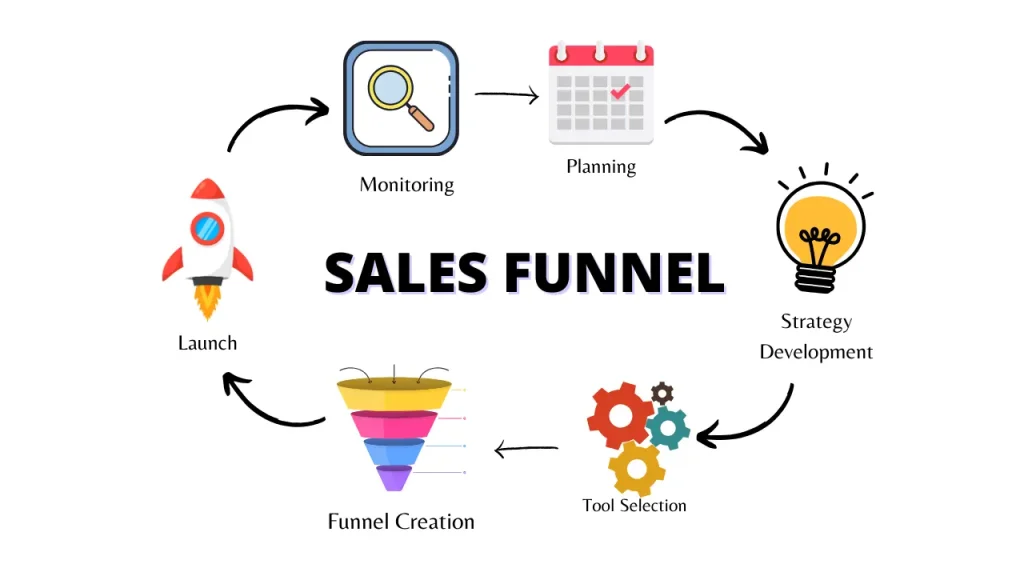
Implementing a sales funnel requires careful planning and execution. Follow these steps to build and launch an effective sales funnel:
- Planning and Strategy Development:
- Define your goals and objectives. What do you want to achieve with your sales funnel?
- Outline the stages of your sales funnel. Identify the key actions and strategies for each stage.
- Identify the tools and resources you need. Determine which platforms and tools will help you build and manage your funnel effectively.
- Tools and Platforms to Use:
- Use CloudFunnels for creating and managing your sales funnel. Its robust features and user-friendly interface make it an ideal choice.
- Integrate with CRM tools and email marketing platforms to streamline your efforts and ensure seamless operations.
- Execution and Monitoring:
- Launch your funnel and monitor its performance. Track key metrics to ensure everything is working as planned.
- Use analytics to track progress and identify areas for improvement. Make data-driven adjustments to optimize your funnel.
- Continuously optimize your funnel based on data insights. Regularly review and refine your strategies to achieve better results.
FAQs about Sales Funnels
What is a sales funnel?
A sales funnel is a marketing model that represents the journey potential customers take from initial awareness to the final purchase. It helps businesses guide prospects through each stage of the buying process.
How does a sales funnel work?
A sales funnel works by attracting potential customers, nurturing their interest, and guiding them towards making a purchase. Each stage of the funnel involves specific strategies and actions to move prospects closer to conversion.
What are the stages of a sales funnel?
The typical stages of a sales funnel are: Awareness, Interest, Consideration, Intent, Evaluation, Purchase, Post-Purchase, and Loyalty.
How can I optimize my sales funnel?
Optimize your sales funnel by analyzing performance data, conducting A/B testing, refining your content and strategies for each stage, and using tools like CloudFunnels to streamline and enhance your funnel.
What tools are best for building a sales funnel?
Some of the best tools for building a sales funnel include: CloudFunnels, ClickFunnels, Kartra, Systeme, and FastPages.
Conclusion
Creating an effective sales funnel is essential for guiding potential customers through their buying journey. By understanding the stages of a sales funnel and implementing targeted strategies at each stage, you can improve your marketing efforts and drive more conversions. Tools like CloudFunnels can significantly enhance your funnel-building process by providing robust features and seamless integration options. Invest time in building and optimizing your sales funnel is important to achieve better results and grow your business. Start implementing the strategies discussed in this guide and watch your sales and customer satisfaction improve.

